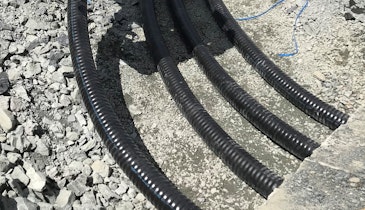In “newer” parts of the country, tankless water heaters, ultra-high-efficiency toilets, waterless urinals, rain collections systems, recycled graywater systems, state tax incentives for graywater programs and on-demand everything are the norm.
Sure, a small percentage of these newer areas are older homes, but for the most part, newer parts of the country were built with these systems installed from day one and are part of the culture. For the rest of the country, which deals with houses built during the time of George Washington, it can be the opposite.
Swapping a tankless water heater out in a newer Arizona home is different than totally re-roughing an entire basement to accept new style units, pipe sizing and flue routes. Drilling a hole through a wood frame house on stilts on the Outer Banks of North Carolina is different than drilling through an 8-foot-thick solid stone foundation wall in Boston.
Places like California need to conserve water while the northeastern United States has so many rivers, aquifers and watersheds that they don’t even know how much water is available. All they know is that it seems endless.
Selling green
Going “green” is in some parts of the country, a no-brainer. Older parts it can be a fistfight because of higher installation costs and lack of perceived value due to those associated costs.
Plumbers could argue both sides of this issue all day long. It does make you realize that payoff and today’s installation costs many times outweigh any long-term investment benefit depending on how old a structure is and how it was built. Many people, no matter how well you inform them, don’t look at their appliances or water waste as a worthwhile investment because much of our country is spoiled with plentiful water supplies and relatively inexpensive utility costs.
They will invest in a new porch, car, vacation house, the stock market or a mutual fund, but not in the water, fuel and electric waste in their homes — even though you could make the argument that we could save them more monthly than they will make in the market nowadays.
So how then can we “sell” customers on greener products? Let us start with some realities in older areas of America.
Water is many times plentiful and relatively cheap. There is very little sense of urgency to lower a water-heater gas bill because it costs a couple of hundred dollars a year to operate a tank unit. Many people have “free” water from auxiliary sources, such as a private well. Customers are used to how things have been and see no need to change. Because of the internet, customers are more aware that parts for newer greener equipment are not as readily available and more expensive to repair than older models.
Many older customers grew up and still have old heavy Speakman showerheads with no flow restrictors, which gives them a power-wash shower that they love. These customers wouldn’t trade that power shower for anything in the world. Finally, the thought of having an annual maintenance cost for something as simple as a water heater angers them tremendously.
Lots of people in the northeast will have a septic tank, leachfield, private gas well and private water well with the only utility bill they pay being electric. So how then, in this market, do we go green?
Thinking small
Stop thinking sweeping big-ticket, state-of-the-art items and think instead of case-by-case opportunities where you can match a green solution so they have an immediate result. Tie the green idea into premature failures of equipment and unnecessary downtime and costs.
Let’s use water waste as our first example. Limiting waste is green. Think of how many simple ways a customer wastes water. Leaking toilets, faucets, taps and spigots alone account for tons of wasted water. Did you ever actually read the back of those toilet dye tablets about how much water is wasted by a leaking flapper? That will resonate with a customer.
What about turning the water heater temperature down to a lower setting? Not only does hotter water cost more to make, but it also wears down the water heater quicker. Do you live in a warmer climate with a customer who has an electric water heater? What about giving them the option of a heat pump water heater that steals humid air and uses it to heat the water? Many times, these people run a dehumidifier regularly anyway — why not turn two into one?
How about a tub-shower spout diverter that doesn’t seal all the way? You’re taking a shower while half the water is just going through the spout and right down
the drain.
Could you install a graywater discharge to the garden on a call to install a new laundry setup? Two birds with one stone — switch left to discharge to garden, right to discharge to sewer. Everyone in cold areas has had a catastrophic frozen pipe event that ruined the living room while they were on vacation. These people would consider those new devices that shut the water off during a line break. What’s more expensive, a new living room or a water device installation?
Making a difference
Sometimes it’s the simple things and figuring out how to tie them into real-world applications that can make the customer feel they are making a difference with their bills, going green and preventing a costly breakdown. Easing older homes into being green is a better approach than forcing big-ticket items down their throats when the payoff may never actually pay itself off.
Going green in old American cities has to be an evolution and not an overnight change.
The type of house decides the installation cost of many items like a tankless water heater. Some homes are an easy day; others can be a three-day event. The payoff schedule is different for those different customers.
I say instead of making the jump from old school to state-of-the-art green, maybe our best bet is to be more thoughtful and practical with our recommendations to go green. Find ways that are simple and which a homeowner can see a more immediate payoff and value.
------------
Anthony Pacilla has been in the trades since he was 9 years old (family business). He started cleaning toilets, mopping floors and putting fittings away in the warehouse. As he picked up skills, he would add becoming a ground man and laborer. When he was ready, Pacilla became an apprentice and then a journeyman plumber. He graduated college with a business and economics degree and immediately wanted to come back to work in the family business. A few years ago, Pacilla become a licensed master plumber. To contact Pacilla, email editor@plumbermag.com





